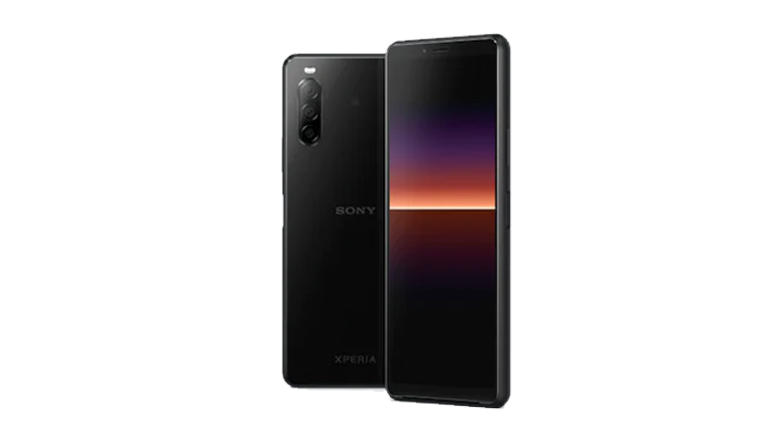'ZDNET Recommends': What exactly does it mean?
ZDNET's recommendations are based on many hours of testing, research, and comparison shopping. We gather data from the best available sources, including vendor and retailer listings as well as other relevant and independent reviews sites. And we pore over customer reviews to find out what matters to real people who already own and use the products and services we’re assessing.
When you click through from our site to a retailer and buy a product or service, we may earn affiliate commissions. This helps support our work, but does not affect what we cover or how, and it does not affect the price you pay. Neither ZDNET nor the author are compensated for these independent reviews. Indeed, we follow strict guidelines that ensure our editorial content is never influenced by advertisers.
ZDNET's editorial team writes on behalf of you, our reader. Our goal is to deliver the most accurate information and the most knowledgeable advice possible in order to help you make smarter buying decisions on tech gear and a wide array of products and services. Our editors thoroughly review and fact-check every article to ensure that our content meets the highest standards. If we have made an error or published misleading information, we will correct or clarify the article. If you see inaccuracies in our content, please report the mistake via this form.
Sony Xperia 10 II review: An affordable but disappointing wide-screen experience


Sony Xperia 10 II
pros and cons
- 21:9 aspect ratio screen on a budget
- IP65/68 rating for dust/water resistance
- Good-quality OLED screen
- Moderate camera performance
- Tall screen is unwieldy to use
- Average speaker performance
- Fast charger not included
Sony's 2020 flagship Xperia I II has now been joined by the mid-range Xperia 10 II, which shares its distinctively tall 21:9 aspect ratio screen. That screen is a feature across the Xperia range these days, and is a central element of the Xperia brand.
At £319 (inc. VAT), the Xperia 10 II -- which is not currently available in the US -- sits in a crowded space. Recently we've seen two notable new entrants in this price bracket, providing serious competition -- the OnePlus Nord and the Google Pixel 4a. Other alternatives from the likes of Honor and Xiaomi are snapping at this handset's heels, too. Can the Xperia 10 II compete?
Last year there were a couple of variants of the Xperia 10, and I reviewed the larger Xperia 10 Plus. This year there's just the one Xperia 10. It's a tall, narrow handset measuring 69mm by 157mm, and is suitably thin at 8.2mm. It weighs 151g.
The 6-inch, 21:9 Xperia 10 II costs £319 (inc. VAT). It runs on the Snapdragon 665 mobile platform with 4GB of RAM and 128GB of internal storage.
Those dimensions make this a frustrating phone for small-handed users. I could reach right across the screen one-handed, but couldn't access its full height without juggling the phone around in my palm. That's compounded by the fact that the Xperia 10 II has an extremely slippery glass back, making it feel less than secure in the hand.
The power button (below the volume rocker) incorporates a fingerprint reader.
Like the front, the back is made from Gorilla Glass 6. The phone slid around and fell from my armchair on multiple occasions, and while I didn't actually drop it, there were several near misses. Moreover, the back is super-shiny and attracts fingerprints. It has no redeeming features unless you want to use the back as a mirror, and a case is almost a requirement.
There's a USB-C port for charging on the bottom edge, and a 3.5mm headset jack on the top. The right edge houses the volume rocker and the power switch, which is a flat lozenge incorporating the fingerprint sensor.
There's no bottom speaker grille, and that's because the mono speaker outputs via a long indented panel on the bottom edge of the screen. This gets over the perennial problem of muffling the sound when holding the screen in landscape mode -- watching video or playing games, for example.
Top ZDNET Reviews
Unfortunately, Sony hasn't backed up this arrangement with a decent speaker. Sound quality is only average, and that's a real shame given that this is a phone whose screen dimensions make it ideal for media consumption and gaming. The tiny indent for the speaker is an absolute fluff magnet. After a couple of days in my pocket it looked very untidy -- and I don't think my pockets are unusually attractive to dust motes.
The Xperia 10 II has an IP65/68 rating for dust and water resistance, so at least the inside of the phone should be well protected.
The 6-inch screen has a very tall 21:9 aspect ratio and a resolution of 2,520 by 1,080 pixels (457ppi). There are noticeable bezels at the top and bottom, resulting in a low screen to body ratio of 77.5%. The front camera sits in the upper bezel, proud of the screen, so at least there's no interruption there.
There are two settings for the OLED display, Original and Standard, the latter having a brighter, more 'poppy' colour gamut. I preferred this much of the time. The wide screen is great when you're looking at 21:9 video, but letterboxing is noticeable with more standard aspect ratios.
Sony offers two software tweaks to help users make more of the screen when they're not watching video or playing games.
Image quality settings for the OLED screen (left) and Side Sense (right).
Tap the right edge of the screen twice and out pops Side Sense, a miniature shortcuts area you can populate with your favourite apps. It also offers a 'one-handed' option that literally shrinks the screen's content down to about three-fifths of its original size, with large black borders above and to one side. On the 6.5-inch Xperia 1 this can be useful, but here tappables become too small to hit accurately.
Multi-Window: setup (left) and in action (right).
Both Side Sense and an app icon also give you access to Multi-Window, which splits the screen into two user-sizeable sections that can run apps independently. There's a selection of apps on a shortcut area that appears when you trigger Multi-Window, and for speed there's also a series of preset twins you can run with a single tap. These will follow your own usage pattern, so you can get to favourites easily. Multi-Window works well enough, but again is hampered by the overall screen size, and I found it much more usable on the larger Xperia 1 II.
There's an extensive list of apps to choose from at setup time.
Side Sense and Multi-Window are key aspects of the overlay that Sony places on top of Android 10. The setup process also offers a whole raft of applications you can decide to install or not one by one. These include several from Google (Calculator, Sheets, Docs, News, Slides), and a whole bunch from Sony (Imaging Edge Mobile, AccuWeather, Booking.com, Amazon, PlayStation App, News Suite by Sony, Outlook). Facebook and Netflix are preinstalled and not removable.
Having accepted all the optional extras I found the 128GB of the internal reduced by 23GB, leaving 105GB free for my own apps and data.
The Xperia 10 II's Snapdragon 665 chipset is supported by 4GB of RAM. It delivered average Geekbench 5 CPU scores of 229 (single core) and 1189 (multi core). This is close to the Motorola Moto G8's 1402 and 312, which shares the same processor and RAM. While the Moto G8 has a considerably lower price, it is much less sophisticated in the screen department. This level of performance is, naturally, nowhere near the leading edge for Android handsets, which is currently around 900 and 3300 for single core and multi core respectively.
This is not a 5G handset, but it will accommodate two SIMs if you don't mind sacrificing the option of a MicroSD card to expand the internal storage.
SEE: 5G smartphones: A cheat sheet (free PDF) (TechRepublic)
The front camera is an 8MP f/2.0 unit, while Sony has opted for a trio of cameras at the back: 12MP f/2.0 wide angle, 8MP f/2.4 telephoto (2x optical zoom) and 8MP f/2.2 ultra-wide-angle (120°). The AI automatically detects food shots and enhances them (so that's great if you're a foodie), and it will switch into macro mode if the lens is close to its subject. I managed some interesting point-and-shoot shots, but was irritated by notable shutter lag, and also by the slowness with which the camera software sometimes adjusted to my requests. Some of this may be fixable in software, but as it stands the point-and-shoot experience is below par. That's doubly irritating as the Xperia 1 II did so well on the camera front.
The Sony Xperia 10 II has a 3600mAh battery. Under the PCMark for Android battery rundown test it ran for 15 hours and 30 minutes. When I asked the handset to play video from YouTube for three hours, it did so dropping just 18% from a full charge. Anecdotally the Xperia 10 II ought to get you through a day of mainstream usage. Disappointingly, despite supporting fast charging, Sony makes you buy its Fast Charger UCH32C as an optional extra.
Conclusions
As with other Xperia handsets, the 21:9 aspect ratio is the key draw here. Be prepared for a considerable amount of video letterboxing along with the (rather enjoyable) wide-screen viewing. You can also expect some usability challenges navigating the screen one-handed, while the camera performance is disappointing. Both the OnePlus Nord and Google Pixel 4a are more expensive and have standard aspect ratio screens, but they are worth checking out, along with other options, as possible alternatives.
RECENT AND RELATED CONTENT
Sony Xperia 1 II review: Cinematic 4K screen, 5G and better battery life, but the price is high
Sony Xperia 1 review: Superb cinematic 4K screen, but battery life falls short
OnePlus Nord review: A great-value mid-range 5G smartphone
Google Pixel 4a review: Excellence at an affordable price
The best cheap phones for frugal times: Flagship features on any budget
Read more reviews
- Selpic P1 hand-held printer hands-on: A tiny wireless inkjet printer for multiple surfaces
- Samsung Galaxy Note 20 Ultra review: 5G, display, cameras, and S Pen make it the best phone for business
- Apple 27-inch iMac (mid-2020) review: Apple reassures Mac users with a strong update for the Intel iMac
- Google Pixel 4a review: Excellence at an affordable price
- TCL 10 5G review: Excellent specs, build and performance for the price